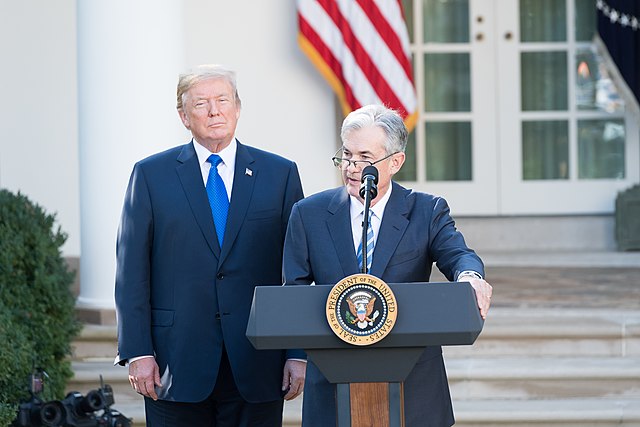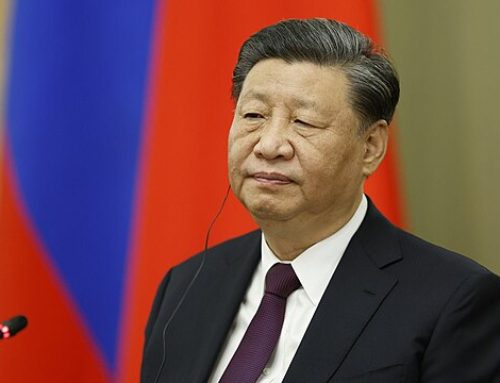Today’s Wall Street Journal reported that Donald Trump’s allies are quietly drafting proposals that would attempt to erode the Federal Reserve’s independence if he wins a second term. That said, his advisors are divided about how aggressively that will challenge the central bank’s authority.
Currently, the Fed enjoys considerable operational autonomy in setting interest rates.
The discussions range from incremental policy changes to a long-shot assertion that the president himself should play a role in setting interest rates. Reportedly, the draft document recommends subjecting Fed regulations to White House review and more forcefully using the Treasury Department as a check on the central bank. The group also would like Trump to have the authority to oust Jerome Powell as Fed chair before his four-year term ends in 2026. In 2019, when Trump toyed with the idea of ousting Powell, the chairman made clear in public and in private that he didn’t believe the president had the authority to fire him.
It couldn’t be determined whether Trump is aware of or signed off on the effort to reduce the independence of the Fed, but some people close to the discussions believe the work has received the blessing of the former president.
Trump has repeatedly complained—in public and in private—about Powell, continuing a yearslong campaign to discredit the man he picked to lead the Fed.
The discussions have alarmed some Trump advisers with more-traditional views of the role of the Fed, as well as Republican lawmakers. They worry that chiseling away at unwritten norms around keeping politics at arm’s length from Fed decisions could backfire, particularly if political interference leads investors to conclude that the central bank is willing to tolerate higher inflation. That could raise long-term interest rates, including rates on mortgages, credit cards and auto debt, when the U.S. government has to roll over trillions of dollars in debt annually. One former Trump administration official described the prospect of Trump’s influencing interest rates as a “horrifying thought.”
“Given their charge, their independence is critical to doing it in an unbiased, nonpolitical way,” said Sen. Kevin Cramer (R., N.D.), who said he would oppose efforts by any president to challenge the Fed’s autonomy. “There’s a reason that there’s not just one decision maker—that there are safeguards built into a board of governors.”
Any effort by Trump to exert control over the Fed would face significant institutional hurdles. Lawyers who have studied the issue believe the president lacks the power to fire Fed governors over a policy dispute. Whether the president has the authority to demote the chair and replace him or her with a sitting governor isn’t clear.
After the publication of this article online, analysts said they thought several of the boldest proposals were legally dubious but could still roil bond and currency markets if the White House attempted them. “The market would react very badly to any effort to tame the Fed, and we think this would cause the administration to back off,” said Krishna Guha, vice chairman at Evercore ISI, in a note to clients Friday.
Inflation is a serious concern. Last year the Fed lifted rates to the highest level since 2001 and has held them there to combat inflation that soared to a four-decade high in 2022 and is still running above the Fed’s target.
The Fed has a mandate to keep inflation low and labor markets healthy. Presidents have the ability to influence the Fed through their appointments, but that authority can be limited because of the checks and balances built into the central-bank system.
Interest-rate policy is decided by the Federal Open Market Committee, which includes seven members of the Washington-based board of governors, who are appointed by the president and confirmed by the Senate, and 12 presidents of regional Fed banks, who are appointed by those banks’ private boards. The governors and the New York Fed president have a permanent vote, and four reserve bank presidents rotate onto the committee for one year at a time.
Installing a loyalist to Trump could be difficult because central bank’s leaders have been haunted by the example of Arthur Burns, who headed the central bank from 1970-1978. Burns failed to corral runaway inflation that ended only after Paul Volcker put the economy through two painful recessions in the early 1980’s. Burns has been subject to criticism by his being overly preoccupied with currying favor from President Nixon.
Trump has been openly critical of Powell for (1) raising rates and (2) not lowering them quickly enough.
In the past president’s have tried to interfere with the independence of the Fed. Harry Truman wrote the Fed chair and begged him to hold off raising interest rates.
The Fed resisted. What followed hadn’t ever occurred before and hasn’t happened since: The central bank’s entire rate-setting committee was summoned to meet with the president at the White House.
Within weeks, the Fed and the Truman administration had reached an understanding that became known as the Treasury-Fed Accord. The central bank would have a freer hand to set interest rates as it saw fit.
Lyndon Johnson appealed to the Fed to keep rates low during the Vietnam War while he was working to secure an ambitious social-spending budget. Johnson summoned William Martin, the Fed chair at that time, to his Texas ranch where he was reportedly pushed around by the president.
Conclusion
We need to keep the Fed independent if we want to control inflation. Repeatedly, presidents want the Fed to keep interest rates low even if that means stoking inflation. After the runaway inflation of the 1970’s in large part caused by the failure to raise taxes to pay for the Vietnam War, Paul Volcker needed to raise overnight rates above 20% to break the back of inflation.




